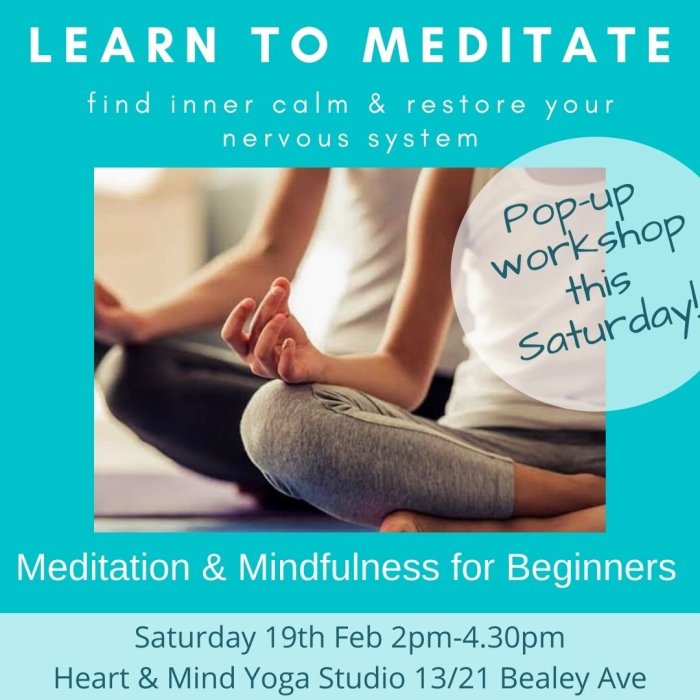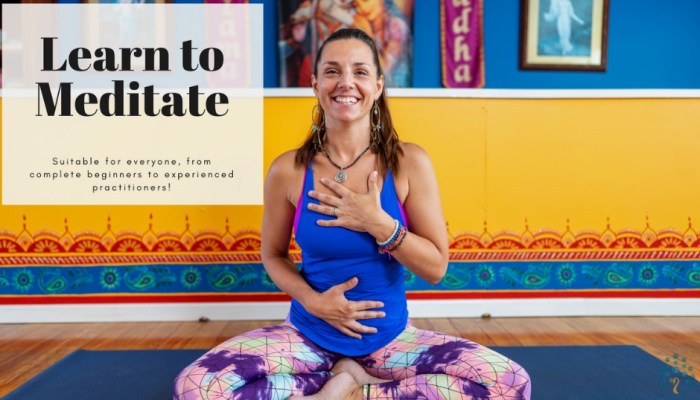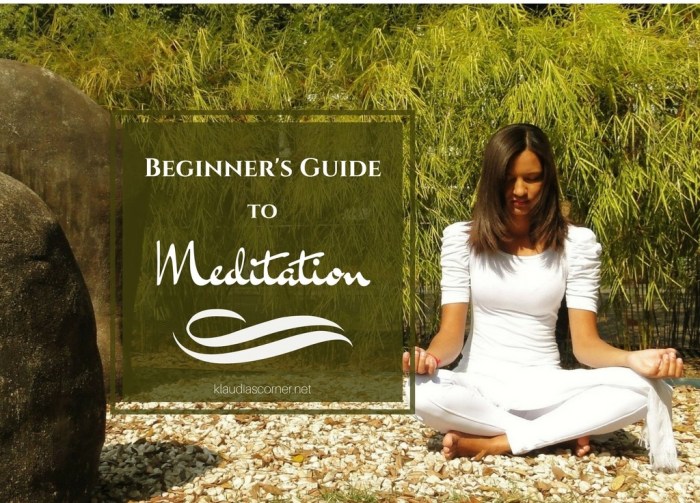Embark on a journey to discover the transformative power of meditation and unlock a path to inner calm and well-being with our comprehensive guide on learning to meditate.
Explore the benefits, techniques, and practical tips to kickstart your meditation practice and embrace a more mindful lifestyle.
Benefits of Meditation

Source: squarespace-cdn.com
Meditation offers a wide range of benefits that positively impact both physical and mental well-being. Incorporating meditation into your daily routine can lead to significant improvements in various aspects of your life.
Physical Benefits
- Reduces blood pressure and improves cardiovascular health.
- Enhances immune system function, leading to better overall health.
- Promotes better sleep patterns and helps in managing chronic pain.
Mental Health and Emotional Well-being
- Reduces symptoms of anxiety and depression.
- Enhances self-awareness and fosters a more positive outlook on life.
- Improves focus, concentration, and cognitive functions.
Stress Reduction and Quality of Life
- Helps in managing stress and promoting relaxation.
- Increases feelings of calmness and inner peace.
- Improves emotional stability and resilience in facing life challenges.
Types of Meditation Techniques

Source: org.au
There are several types of meditation techniques that individuals can practice to achieve mindfulness, relaxation, and inner peace. Each type of meditation focuses on different aspects of mental and emotional well-being, utilizing unique methods and approaches.
Mindfulness Meditation
Mindfulness meditation involves focusing on the present moment without judgment, allowing thoughts and feelings to come and go without attachment. This technique emphasizes awareness of sensations, thoughts, and emotions, promoting a sense of calm and clarity.
- Find a quiet place to sit or lie down comfortably.
- Focus on your breath, observing each inhalation and exhalation.
- Acknowledge any thoughts or distractions that arise, then gently redirect your focus back to your breath.
- Practice regularly to strengthen your ability to remain present and cultivate mindfulness in everyday life.
Loving-Kindness Meditation
Loving-kindness meditation, also known as Metta meditation, involves cultivating feelings of love, compassion, and goodwill towards oneself and others. This practice aims to increase empathy, reduce negative emotions, and foster a sense of connection and positivity.
- Sit comfortably and close your eyes, focusing on your breath to center yourself.
- Repeat positive affirmations or phrases such as “May I be happy, may I be healthy, may I be safe, may I live with ease.”
- Extend these wishes to others, starting with loved ones, then towards acquaintances, and eventually to all beings.
- Practice regularly to cultivate feelings of kindness and compassion towards yourself and others.
Transcendental Meditation
Transcendental meditation involves silently repeating a mantra, a specific word or phrase, to quiet the mind and reach a state of deep relaxation and inner peace. This technique aims to transcend ordinary thinking and access a higher state of consciousness.
- Sit comfortably with your eyes closed and silently repeat your chosen mantra.
- Allow your mind to effortlessly focus on the sound and vibration of the mantra, letting go of other thoughts.
- If distractions arise, gently return your attention to the mantra without judgment.
- Practice regularly to experience deep relaxation and connect with your inner self.
Getting Started with Meditation

Source: learntomeditate.org
When starting your meditation journey, it is crucial to create a conducive environment that promotes relaxation and focus. Here are some tips for beginners:
Creating a Conducive Environment
- Find a quiet and peaceful space where you won’t be disturbed.
- Dim the lights or light a candle to create a calming atmosphere.
- Use cushions or a comfortable chair to support your posture during meditation.
Importance of Posture and Breathing
Posture and breathing play a significant role in meditation as they help you relax and stay focused. Here are some key points to remember:
- Sit comfortably with your back straight and shoulders relaxed.
- Rest your hands on your lap or knees with palms facing up or down.
- Focus on your breath, taking slow, deep breaths to calm your mind and body.
Simple Meditation Routine for Beginners
Here is a basic meditation routine that beginners can follow:
- Find a comfortable seated position in a quiet space.
- Close your eyes and take a few deep breaths to relax.
- Focus on your breath, inhaling and exhaling slowly and deeply.
- Notice any thoughts that arise without judgment, and gently bring your focus back to your breath.
- Continue this practice for 5-10 minutes, gradually increasing the duration as you feel more comfortable.
Overcoming Common Challenges in Meditation

Source: amazonaws.com
When starting a meditation practice, it’s common to face certain challenges that can make it difficult to stay consistent. By understanding these obstacles and implementing strategies to overcome them, you can make the most of your meditation sessions.
Dealing with a Wandering Mind
One of the most common challenges during meditation is a wandering mind. It’s natural for thoughts to arise while you meditate, but the key is not to get attached to them. Instead, acknowledge the thoughts and gently bring your focus back to your breath or mantra. Practicing mindfulness can help you become more aware of when your mind starts to wander, allowing you to redirect your attention more effectively.
Staying Consistent with Meditation
Consistency is key when it comes to reaping the benefits of meditation. To stay consistent with your practice, try to establish a routine that works for you. Whether you prefer to meditate in the morning, during your lunch break, or before bed, find a time that you can commit to each day. Setting realistic goals, such as starting with just a few minutes of meditation and gradually increasing the duration, can also help you stay on track.
Remember, it’s okay to miss a session now and then – the important thing is to get back to your practice without self-judgment.
Final Summary

Source: klaudiascorner.net
Master the art of meditation, overcome challenges, and cultivate a sense of harmony and balance in your daily life as you delve deeper into the world of self-discovery and mindfulness.